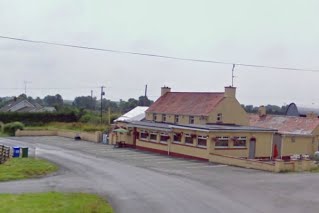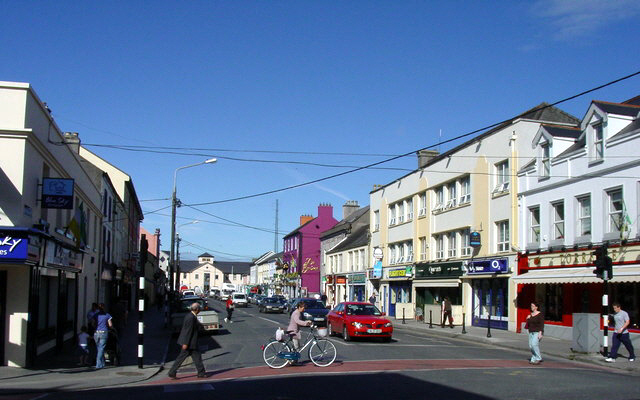|
Ráith Aeda Meic Bric
Rahugh or ''Ráith Aeda Meic Bric'' is an early Christian site founded by Áed mac Bricc (also referred to as Saint Hugh of Rahugh) in the 6th century, inside a ráth or ringfort. The site, located about 8 km north of Tullamore along the L1024. Rahugh consists of one pub (The Hazel Bar and Lounge) a Catholic church The Catholic Church, also known as the Roman Catholic Church, is the largest Christian church, with 1.3 billion baptized Catholics worldwide . It is among the world's oldest and largest international institutions, and has played a ..., local community centre, a primary school and several small -medium-sized enterprises such as Dunnes Workshop and Scally Precast. Rahugh also contains the remains of an ancient Christian monastery site and graveyard, a holy well and a so-called headache stone. Rahugh (Irish: Ráth Aodha) is a civil parish in County Westmeath, Ireland. It is located about 20 kilometres (12 mi) south–south–west of Mulli ... [...More Info...] [...Related Items...] OR: [Wikipedia] [Google] [Baidu] |
Áed Mac Bricc
Áed mac Bricc (died 589) was an Irish bishop and saint. Life Áed's principal church was at Rahugh (Ráith Áeda Meic Bricc) in modern County Westmeath. He was regarded as a patron saint of the Uí Néill and was said to be a descendant of Fiachu mac Néill Fiachu mac Néill (flourished 507–514) was a king of Uisnech in Mide of the Ui Neill dynasty. He was the son of the high king Niall Noígíallach. According to the king list in the ''Book of Leinster'', he succeeded his brother Conall Cremthainn .... When his brothers refused to allow him a share of the land his father had maintained, Áed carried off a girl who belonged to them. He hoped to force his brothers to give him his patrimony through this injury, but then he met the bishop St Illann, who convinced him to give up his claims to the land and to let the girl go. Áed mac Bricc's life in the Codex Salmanticensis presents Áed as a peacemaker between Munster and the Uí Néill, and between Mide and Tethbae, befittin ... [...More Info...] [...Related Items...] OR: [Wikipedia] [Google] [Baidu] |
Ráth
Ringforts, ring forts or ring fortresses are circular fortified settlements that were mostly built during the Bronze Age up to about the year 1000. They are found in Northern Europe, especially in Ireland. There are also many in South Wales and in Cornwall, where they are called rounds. Ringforts come in many sizes and may be made of stone or earth. Earthen ringforts would have been marked by a circular rampart (a bank and ditch), often with a stakewall. Both stone and earthen ringforts would generally have had at least one building inside. Distribution Ireland In Irish language sources they are known by a number of names: ' (anglicised ''rath'', also Welsh ''rath''), ' (anglicised ''lis''; cognate with Cornish '), ' (anglicised ''cashel''), ' (anglicised ''caher'' or ''cahir''; cognate with Welsh ', Cornish and Breton ') and ' (anglicised ''dun'' or ''doon''; cognate with Welsh and Cornish ').Edwards, Nancy. ''The Archaeology of Early Medieval Ireland''. Routledge, 20 ... [...More Info...] [...Related Items...] OR: [Wikipedia] [Google] [Baidu] |
Tullamore
Tullamore (; ) is the county town of County Offaly in Republic of Ireland, Ireland. It is on the Grand Canal (Ireland), Grand Canal, in the middle of the county, and is the fourth most populous town in the Midland Region, Ireland, midlands region with 14,607 inhabitants at the 2016 census. The town retained Gold Medal status in the National Tidy Town Awards in 2015 and also played host to the World Sheep Dog Trials in 2005 which attracted international interest in the region. The Tullamore Show is held near the town every year. The town's most famous export is Tullamore Dew – an Irish whiskey distilled by Tullamore Distillery – that can be traced back to 1829. The Old Tullamore Distillery, original distillery was shut down in 1954, with the brand later being resurrected and produced at the New Midleton Distillery, Midleton Distillery, in County Cork, Cork. However, the brand's new owners, William Grant & Sons, invested in a new distillery near Tullamore, bringing ... [...More Info...] [...Related Items...] OR: [Wikipedia] [Google] [Baidu] |
Rahugh
Rahugh or ''Ráith Aeda Meic Bric'' is an early Christian site founded by Áed mac Bricc (also referred to as Saint Hugh of Rahugh) in the 6th century, inside a ráth or ringfort. The site, located about 8 km north of Tullamore along the L1024. Rahugh consists of one pub (The Hazel Bar and Lounge) a Catholic church The Catholic Church, also known as the Roman Catholic Church, is the largest Christian church, with 1.3 billion baptized Catholics worldwide . It is among the world's oldest and largest international institutions, and has played a ..., local community centre, a primary school and several small -medium-sized enterprises such as Dunnes Workshop and Scally Precast. Rahugh also contains the remains of an ancient Christian monastery site and graveyard, a holy well and a so-called headache stone. Rahugh (Irish: Ráth Aodha) is a civil parish in County Westmeath, Ireland. It is located about 20 kilometres (12 mi) south–south–west of Mullin ... [...More Info...] [...Related Items...] OR: [Wikipedia] [Google] [Baidu] |
Rahugh Catholic Church
Rahugh or ''Ráith Aeda Meic Bric'' is an early Christian site founded by Áed mac Bricc (also referred to as Saint Hugh of Rahugh) in the 6th century, inside a ráth or ringfort. The site, located about 8 km north of Tullamore along the L1024. Rahugh consists of one pub (The Hazel Bar and Lounge) a Catholic church The Catholic Church, also known as the Roman Catholic Church, is the largest Christian church, with 1.3 billion baptized Catholics worldwide . It is among the world's oldest and largest international institutions, and has played a ..., local community centre, a primary school and several small -medium-sized enterprises such as Dunnes Workshop and Scally Precast. Rahugh also contains the remains of an ancient Christian monastery site and graveyard, a holy well and a so-called headache stone. Rahugh (Irish: Ráth Aodha) is a civil parish in County Westmeath, Ireland. It is located about 20 kilometres (12 mi) south–south–west of Mullin ... [...More Info...] [...Related Items...] OR: [Wikipedia] [Google] [Baidu] |
6th-century Establishments In Ireland
The 6th century is the period from 501 through 600 in line with the Julian calendar. In the West, the century marks the end of Classical Antiquity and the beginning of the Middle Ages. The collapse of the Western Roman Empire late in the previous century left Europe fractured into many small Germanic kingdoms competing fiercely for land and wealth. From the upheaval the Franks rose to prominence and carved out a sizeable domain covering much of modern France and Germany. Meanwhile, the surviving Eastern Roman Empire began to expand under Emperor Justinian, who recaptured North Africa from the Vandals and attempted fully to recover Italy as well, in the hope of reinstating Roman control over the lands once ruled by the Western Roman Empire. In its second Golden Age, the Sassanid Empire reached the peak of its power under Khosrau I in the 6th century.Roberts, J: "History of the World.". Penguin, 1994. The classical Gupta Empire of Northern India, largely overrun by the Huna, ended ... [...More Info...] [...Related Items...] OR: [Wikipedia] [Google] [Baidu] |

%2C_Co_Roscommon%2C_Ireland.jpg)

